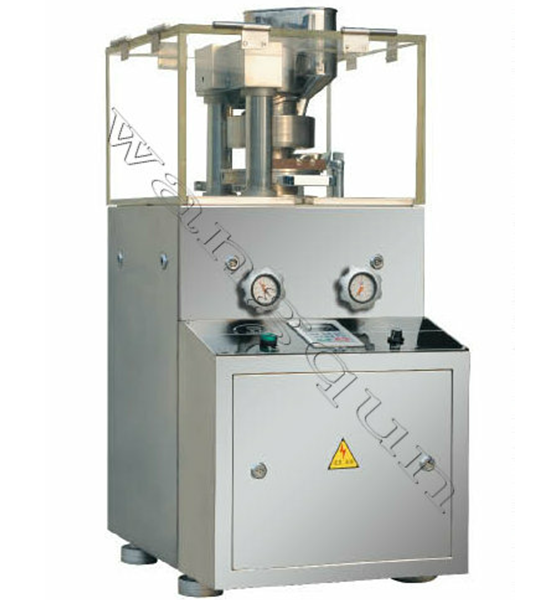Comprehensive Guide to laboratory tablet press: Packaging, Advantages, Installation, and Maintenance
Introduction to Laboratory Tablet Press
A Laboratory Tablet Press is a compact, precision-engineered machine designed for small-scale tablet production in pharmaceutical laboratories, research institutions, universities, and pilot plants. Unlike large industrial presses, a laboratory tablet press is optimized for research and development (R&D), quality testing, and small-batch production. It allows scientists and manufacturers to test formulations, optimize tablet quality, and ensure consistent performance before moving to large-scale manufacturing.
By combining efficiency, accuracy, and durability, a laboratory tablet press plays a crucial role in modern pharmaceutical workflows.

Packaging Specifications for Laboratory Tablet Press
Proper packaging ensures safe transportation, minimizes damage risks, and preserves product integrity. Each laboratory tablet press is typically packaged following international shipping standards to meet customer expectations worldwide.
Standard Packaging Features
Protective Wrapping: Each unit is wrapped with moisture-proof plastic film.
Foam Layering: Cushioning layers are added to absorb vibration and shocks.
Sturdy Wooden Crates: Export-quality crates are used for long-distance transport.
Clear Labeling: Each crate is labeled with machine details, handling symbols, and serial numbers.
Custom Options: Tailored packaging can be provided for air freight, sea freight, or express delivery.
Packaging Specification Table
| Item | Details |
|---|
| Machine Wrapping | Moisture-proof stretch film and anti-rust coating |
| External Packaging | High-strength fumigation-free wooden case |
| Internal Protection | Foam padding, fixed metal brackets, anti-vibration supports |
| Shipping Marking | Machine model, voltage, weight, and fragile handling symbols |
| Custom Packaging Options | Available upon request for bulk orders or specific freight requirements |
Core Product Advantages of Laboratory Tablet Press
1. Compact and Space-Saving Design
2. High Precision and Consistency
Ensures uniform tablet size, weight, and hardness.
Reduces formulation errors during the R&D process.
3. Versatile Applications
Suitable for pharmaceutical, nutraceutical, herbal, and chemical formulations.
Capable of pressing tablets of different shapes and sizes.
4. User-Friendly Operation
5. Cost-Effective for Small-Batch Production
Installation Steps for Laboratory Tablet Press
Proper installation is essential to ensure smooth operation and extend the machine’s service life. The following step-by-step guide provides general instructions:
Step 1: Site Preparation
Select a flat, vibration-free surface.
Ensure adequate lighting and ventilation in the laboratory.
Provide a stable power supply matching machine requirements.
Step 2: Unpacking
Carefully remove wooden crates and protective film.
Check the machine for any transport-related damage.
Verify machine accessories against the packing list.
Step 3: Machine Positioning
Step 4: Electrical Connection
Step 5: Trial Operation
Step 6: Operational Training
Maintenance and Care for Laboratory Tablet Press
Routine maintenance is vital to ensure optimal performance, prevent downtime, and extend machine lifespan.
Daily Maintenance
Clean machine surfaces after each use.
Remove powder residue from dies and punches.
Check for unusual noise or vibration.
Weekly Maintenance
Lubricate moving parts with food-grade grease.
Inspect dies and punches for signs of wear or deformation.
Tighten screws and check alignment.
Monthly Maintenance
Inspect electrical connections for safety.
Test pressure adjustment mechanisms.
Calibrate weight control systems.
Annual Maintenance
Conduct a full inspection of mechanical components.
Replace worn-out punches, dies, or seals.
Perform professional servicing if necessary.
Maintenance Checklist Table
| Maintenance Frequency | Tasks |
|---|
| Daily | Clean surfaces, remove powder, check noise/vibration |
| Weekly | Lubricate parts, inspect dies/punches, tighten screws |
| Monthly | Inspect electrical parts, test pressure control, recalibrate weights |
| Annually | Full mechanical inspection, replace worn parts, professional service |
Safety Guidelines for Operators
To ensure safe usage of the laboratory tablet press, operators should strictly follow these safety measures:
Wear Protective Gear: Gloves, goggles, and dust masks are recommended.
Avoid Overloading: Never exceed maximum pressure and capacity.
Emergency Stop Awareness: Operators must know how to use the emergency stop button.
No Loose Clothing: Avoid wearing jewelry or loose sleeves that may get caught.
Regular Training: Continuous training ensures safe and efficient operation.
Conclusion
The Laboratory Tablet Press is an essential tool for pharmaceutical research, R&D testing, and small-scale production. With proper packaging for safe transport, multiple product advantages, step-by-step installation, and detailed maintenance guidance, this equipment provides exceptional reliability and performance. By following the provided guidelines, laboratories can maximize efficiency, minimize downtime, and extend the lifespan of their tablet press.
Whether you are a pharmaceutical company, a nutraceutical producer, or an academic research institution, investing in a high-quality laboratory tablet press ensures consistent results and long-term cost savings.









 Phone
Phone